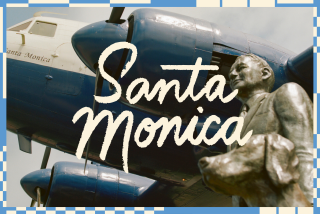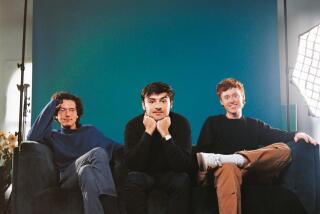After penning the script, Tom Hanks goes to war on the set of ‘Greyhound’
Set on a destroyer, “Greyhound” had its cast “tilting, pitching, leaning, bucking, rolling and rising and falling in amusement park-worthy action,” Hanks writes.
“Greyhound,” the film adapted from the novel “The Good Shepherd” by C.S. Forester, is set in the middle of the ocean during World War II’s Battle of the Atlantic — about as far and wide a location for a movie as possible. That angry sea, frozen sky and the pitch-black nights are ever-present antagonists, characters that are equal to the film’s human cast. Those players, whose faces come and go in the movie with growing recognition, rarely leave the too-cozy confines of a very small, particular space — the bridge of our fictional USS Keeling, the Fletcher-class destroyer code-named Greyhound.
An actual Fletcher-class destroyer — the USS Kidd — sits on the Mississippi River in Baton Rouge, La., as fine a motion picture set as it is a museum. Anyone can step aboard and walk the ship’s historic decks, climb its gangways, pace upon its bridge. For the filming of “Greyhound,” we shot as much footage on the Kidd as possible, even arranging the firing of its guns, a rare event that attracted the local media and many Louisianans.
However, the Kidd’s steel bulkheads and immovable interiors forced us to build our own Fletcher class, or a part of one, on a soundstage at the Celtic Studios a few miles inland — a movie set with removable walls, decks, hatches and portholes; one wrapped in as much green screen as we could tape together.
Our destroyer also sat upon a gimbal, and it was that massive assemblage of steel beams and hydraulic hoses that gave “Greyhound” what the USS Kidd could not — the sense of the rolling sea.
The gimbal was huge, but still only large enough for us to construct a part of the ship: the bridge, its wings and foredeck, and the closely placed sonar room. Most of the film takes place in this cramped, tiny area, tricked out with crew stations and instruments, manned during four-hour watches according to the time of day. As many as a dozen of us were on the bridge at a time, along with other characters coming and going throughout the action of the film.
When the camera was rolling, the gimbal was tilting, pitching, leaning, bucking, rolling and rising and falling in amusement-park-worthy action that had us actors compensating as best we could, sometimes falling into each other, spilling our coffee, bumping our heads and chasing rolling pencils. There were many pencils used and much coffee spilled during the Battle of the Atlantic.
The gimbal took up a huge amount of floorspace in the soundstage and was a massive construct. The set sat atop the thing about 30 feet off the floor, so to get to work, all of us climbed up sets of stairs to a bordering platform from which we would access the set. Actors, crew, camera, boom operators — everyone needed for the shot — had to watch their step and wait for calls of “Gimbal going up!” or “Gimbal coming down!” as well as an all-clear before stepping on or off. The bulkheads were removable, of course, and, yes, a person could fall off the set, which was surrounded by lights, wind machines, water cannons, camera cranes and filming platforms.
Once we were on set and ready to shoot, we had nowhere else to go, no little corner to wander off to, so the isolation we felt when we were filming was not unlike actually being at sea, manning the watch, crammed into a small space, rocking and swaying, being stung by wind and water. Some of the actors, trained in the procedures and duties of their roles, never got out of those “elements,” while others came and went according to the action of the scene. There were plenty of slips, sprains and knotted knees from the wet deck and many places to conk yourself.
We could have used more of all of it, especially that gimbal and that rolling motion of the ocean. With shoulder-mounted cameras (and our superhuman operators) much of the visual sense of movement was compensated for by their own need to keep their feet. Our other sets — the combat information center, the officers wardroom, the captain’s cabin, were not gimbaled, and what wouldn’t we have done for crashing plates, upturned urns of scalding Navy coffee and lurching crewmen.
Speaking for all the cast — those of us who were rooted to the bridge by our roles and by the authenticity we sought — the crammed set became so familiar as to be memorized by our muscles. We could reach for headsets and plugs without looking. We stopped bumping into each other, we found our own focal points, inhabiting a place very different from our Greyhound’s pilothouse on a soundstage.
We all went to war, to the middle of the ocean, to the Battle of the Atlantic all those years ago.
More to Read
From the Oscars to the Emmys.
Get the Envelope newsletter for exclusive awards season coverage, behind-the-scenes stories from the Envelope podcast and columnist Glenn Whipp’s must-read analysis.
You may occasionally receive promotional content from the Los Angeles Times.







